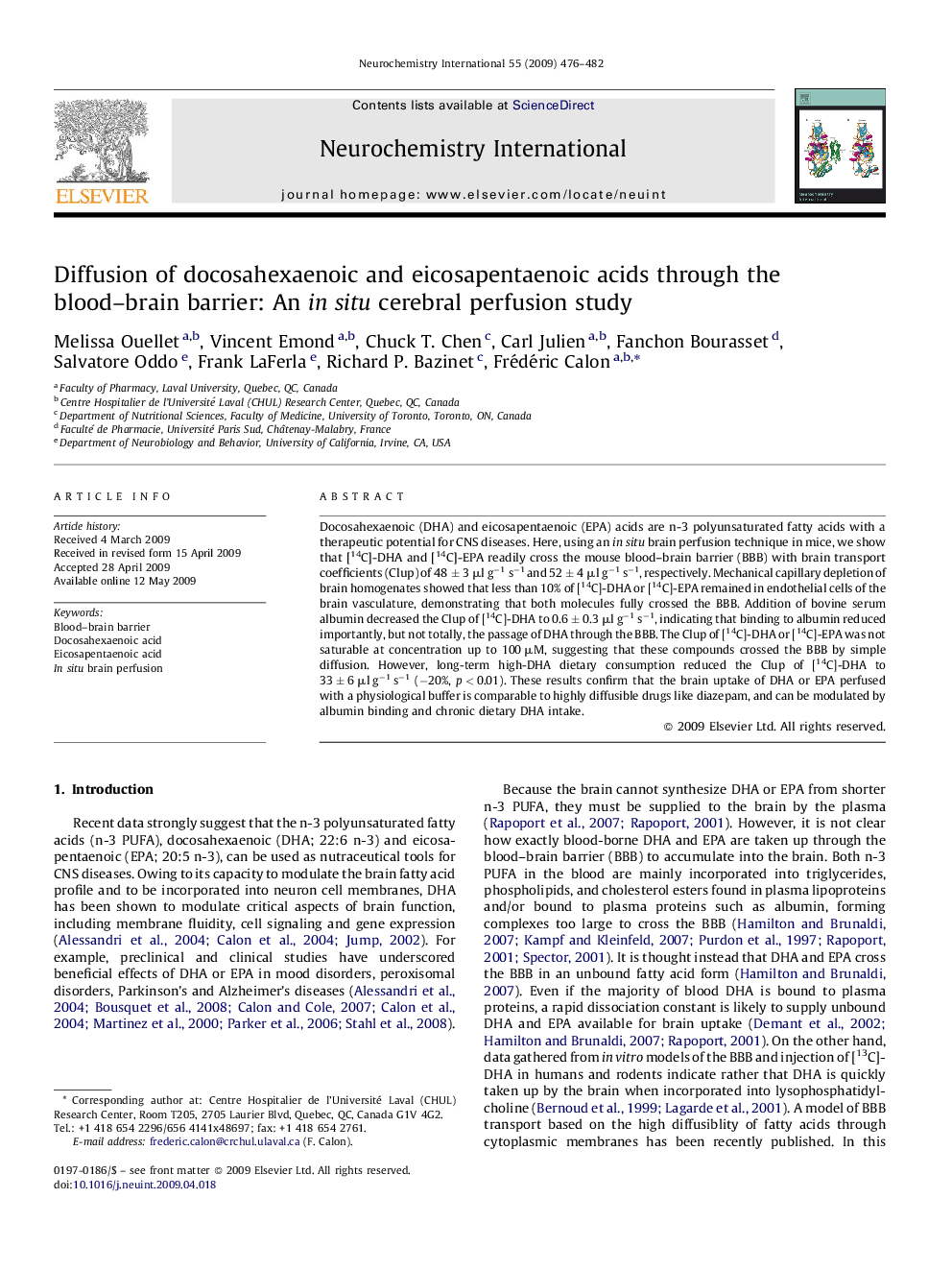| Article ID | Journal | Published Year | Pages | File Type |
|---|---|---|---|---|
| 2201387 | Neurochemistry International | 2009 | 7 Pages |
Docosahexaenoic (DHA) and eicosapentaenoic (EPA) acids are n-3 polyunsaturated fatty acids with a therapeutic potential for CNS diseases. Here, using an in situ brain perfusion technique in mice, we show that [14C]-DHA and [14C]-EPA readily cross the mouse blood–brain barrier (BBB) with brain transport coefficients (Clup) of 48 ± 3 μl g−1 s−1 and 52 ± 4 μl g−1 s−1, respectively. Mechanical capillary depletion of brain homogenates showed that less than 10% of [14C]-DHA or [14C]-EPA remained in endothelial cells of the brain vasculature, demonstrating that both molecules fully crossed the BBB. Addition of bovine serum albumin decreased the Clup of [14C]-DHA to 0.6 ± 0.3 μl g−1 s−1, indicating that binding to albumin reduced importantly, but not totally, the passage of DHA through the BBB. The Clup of [14C]-DHA or [14C]-EPA was not saturable at concentration up to 100 μM, suggesting that these compounds crossed the BBB by simple diffusion. However, long-term high-DHA dietary consumption reduced the Clup of [14C]-DHA to 33 ± 6 μl g−1 s−1 (−20%, p < 0.01). These results confirm that the brain uptake of DHA or EPA perfused with a physiological buffer is comparable to highly diffusible drugs like diazepam, and can be modulated by albumin binding and chronic dietary DHA intake.
